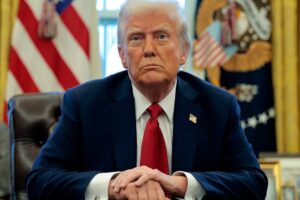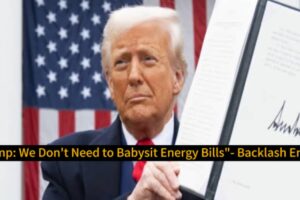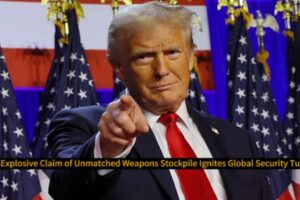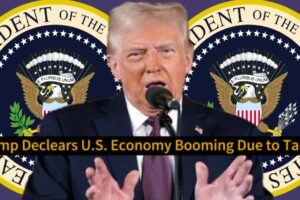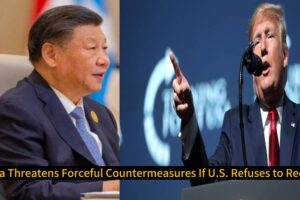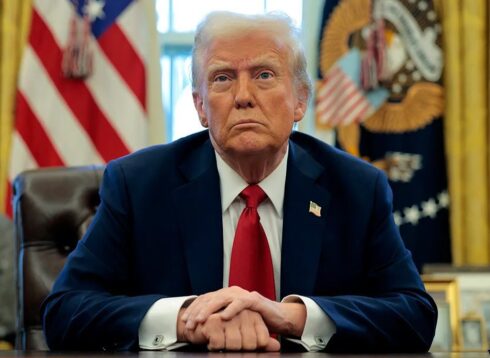U.S. President Donald Trump boldly declared this week that the American economy is “booming” as a direct result of his aggressive tariff policies, describing them as the “smartest economic weapon” ever wielded by a U.S. administration. Speaking at a rally in Michigan, Donald Trump asserted that tariffs imposed on Chinese, Mexican, and European imports have “brought factories back to life,” reinvigorated domestic steel production, and restored leverage in global trade negotiations.
“Before I came along, the world laughed at us,” Trump said. “Now, we make them pay a price for cheating America.” Trump’s rhetoric is designed to stir nationalist sentiment, but economists warn that the data tells a more nuanced story. Despite GDP growth and low unemployment, indicators like sluggish business investment and declining export competitiveness suggest that the long-term effects of tariffs may undercut the short-term gains.
Manufacturing Uptick or Mirage? Analysts Dissect the Numbers
Donald Trump maintains that tariffs have sparked a renaissance in American manufacturing, citing job gains in Rust Belt states and a “surge in patriotic investment.” According to the White House, steel and aluminum sectors have added thousands of jobs since tariffs were enacted in 2018, and more than 300 companies have applied for exclusion waivers to circumvent import taxes—an apparent sign of renewed interest in domestic supply chains.
However, independent analysts are skeptical. While certain industries show growth, broader manufacturing output has been uneven, with key sectors like automotive and electronics suffering from retaliatory tariffs abroad. “This isn’t a manufacturing boom,” says Mark Zandi, chief economist at Moody’s Analytics. “It’s a temporary distortion, not sustainable growth. The real winners are few and far between.”
Global Supply Chains in Turmoil as Trade Wars Expand
Donald Trump insists that tariffs are compelling U.S. companies to “come home,” but global supply chains tell a different story. As firms struggle with disrupted logistics, many are relocating not to the U.S., but to lower-cost nations like Vietnam, India, and Mexico. Trump’s strategy, critics say, has incentivized diversification away from China—but not necessarily toward American soil.
“Companies aren’t reshoring, they’re hedging,” said Mary Lovely, a trade expert at the Peterson Institute for International Economics. “They’re building in redundancy, not repatriation.” Donald Trump, however, remains unfazed. “We’re ending the era of global freeloading,” he declared. But businesses, caught between conflicting duties and compliance costs, are struggling to recalibrate in real time.
Farmers Pay the Price: Rural America Feels the Pinch
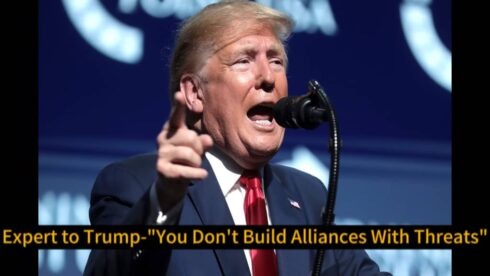
While Donald Trump touts macroeconomic metrics, rural communities are bearing the brunt of his trade crusade. The U.S.-China tariff war devastated key agricultural exports like soybeans and pork, prompting the Trump administration to issue over $28 billion in bailout funds to struggling farmers. Trump insists the aid is a “strategic investment,” not a bailout, and claims farmers are “patriots” who support his long-term vision.
“Farmers understand that short-term pain is worth it,” Donald Trump said during a stop in Iowa. But many in the agriculture sector disagree. With export markets shrinking and crop prices plummeting, rural economies are facing severe financial strain. “We didn’t sign up to be collateral damage in a trade war,” said Jim Mulhern, president of the National Milk Producers Federation.
Wall Street’s Mixed Signals: Boom or Bubble?
Donald Trump claims Wall Street’s record-breaking highs are a clear validation of his economic stewardship, including his tariff strategy. “The stock market loves what I’m doing,” Trump boasted during a press briefing. Indeed, certain sectors like defense, construction, and domestic manufacturing have seen substantial gains since tariffs were implemented.
Yet behind the bullish façade lies market volatility and uncertainty. Tech and retail sectors, highly dependent on global supply chains, have experienced dramatic fluctuations due to tariff threats and sudden policy shifts. Financial analysts caution that investor optimism may be overstated. “Markets are betting on stability,” says Morgan Stanley strategist Lisa Shalett. “But tariff unpredictability introduces systemic risk that could trigger corrections.”
Tariffs Redefine U.S. Trade Identity on the Global Stage
Donald Trump argues that his tariff-centered trade policy has reasserted America’s strength in international commerce, calling it a “necessary correction” after decades of trade imbalances. “We’re no longer the piggy bank that everyone robs,” he said, citing tougher negotiations with China, the European Union, and Canada as proof of regained leverage.
Yet critics argue the approach has isolated the U.S. diplomatically, eroded decades of trust, and sparked retaliatory measures that have hurt American exporters. Trade experts contend that unilateral tariffs without cohesive strategy risk undermining long-term competitiveness. “You don’t build alliances with threats,” said Wendy Cutler, former U.S. trade negotiator. “You build them with consistency and cooperation.”



